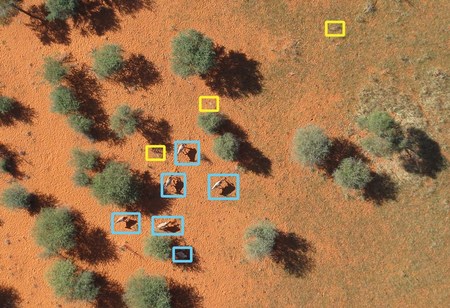AI in Protection of Wildlife
On a foggy Spring morning, my wife Subhalakshmi and I stood on top of a watch tower in Manas National Park in Assam. The tower looked over a vast grass land, now largely burnt down due to Park’s annual exercise to generate new shoots. We were training our binoculars and telephoto lenses in search of something special–Bengal Floricans, a critically endangered bird listed in IUCN red list.
We managed to find seven specimens in couple of hours’ effort. Interestingly we could find only one female among them. It was breeding season. Males were all showing off their breeding plumage and behaviour. Females should have been around. Why only one?
We heard a sad story. This year, the rain stopped late at the park. The grass burning exercise also started late– forest department had to wait to get the grass dried up. Unfortunately breeding season of floricans already started. Many of the female floricans were in hatching. They refused to leave their nests.Eventually many unhatched eggs, and hapless hatching mothers were lost to fire. With only 1300 of this species left in wild, this loss can never be compensated.
Later, I realized, this tragedy could have been avoided easily. It was a typical case of suboptimal decision making, which can be addressed using simple knowledge graph. For all the protected species in a park, we can capture important events of their lives(such as breeding season), external stimulus (such as weather condition),and man-made events (such as burning the dry grass). Interestingly all this knowledge is available in structured and unstructured forms, through real time feeds, forest department manuals, and natural science literatures. With modern information ingestion techniques, extracting the above mentioned parameters is not a difficult problem. And once such a graph is built, foresters can run simulation to understand the
ripple effect of an event, assess the impact on the overall species spectrum in the park, and take informed decision accordingly.
AI in Understanding Wildlife
Few days later, we were trekking inside another forest in North - East – Nameri National Park. Following our guide, we left the main trail to take a narrower path through dense vegetation, which soon opened into few shallow ponds interconnected with each other.
Green algae covered the water surface with few submerged tree sprinkled here and there. We sat behind a bush in anticipation of their arrival.
Our patience paid off. A couple of large ducks flew in and landed at the water surface. Their glossy body was mostly black with white wing-coverts. Neck and head was white with dark spots. We thanked our luck to witness White winged Wood Duck, another endangered species in India.
Very little information is known about this reclusive bird. For example, “Handbook of the Birds of India and Pakistan”, the seminal work by Ali and Ripley, failed to give me even an iot a of idea about their feeding habits in wild. But we saw ourselves the couple fed on green algae walking at shallow water.
The Nameri foresters asserted that this was the only pond cluster where the wood ducks visit in Nameri. It is difficult to believe that in a 200 square-km park there is only one water body where these birds visit and feed. But sighting of this bird is rare. Though the bird’s visit is reported sporadically from different corners of South East Asia, it is difficult to draw any conclusion by looking at individual sighting reports.
But let us look at the opportunity angle here. Vast amount of information is being captured by amateur wild life enthusiasts like us and making them available through social media in the form of blogs, images, and videos. Artificial Intelligence can analyse this information, match that with available scientific literature, and can discover new insights about a species or other. For example, it is not difficult to apply image processing algorithms(e.g. Convolutional Neural Net) to recognize key characteristics and habits of the bird. Moreover, if such images and blogs are analysed well in its entirety, it may be possible to draw patterns and conclusions about their habitat and nature.
Unfair World
There is huge skew in fund allocation of protecting bio-diversity. A handful of big species (e.g. tiger, elephant, rhino)often attract and consume the lion-share of it. For the rest, which is a long list, only peanuts are left; regardless of the fact that many of them are on the verge of extinction. For example, I have not heard of any conscious, big, wide-spread and focussed conservation effort for Bengal Florican or White winged Wood Duck, who are moving fast at the path of indifferent oblivion.
Application of Artificial Intelligence in conservation of wildlife is an emerging field. But so far the efforts (e.g. Protection Assistant for Wildlife Security or PAWS) are mostly beneficial for the large species only. Very little effort is devoted so far in using Artificial Intelligence to understand and protect lesser endangered species.
With limited and skewed funds, only hope for such smaller species would be the use of innovation, such as Artificial Intelligence with a new breed of applications – as cited above.
-
Moreover, Artificial Intelligence can help us to take more holistic approach towards conservation, as opposed to mechanisms for saving a specific species. In a country like India, which enjoys a huge bio-diversity, such a holistic approach would do wonder.
Dr. Sandipan Sarkar, IBM Distinguished Engineer, CTO - Artificial Intelligence & IoT Practice, IBM
